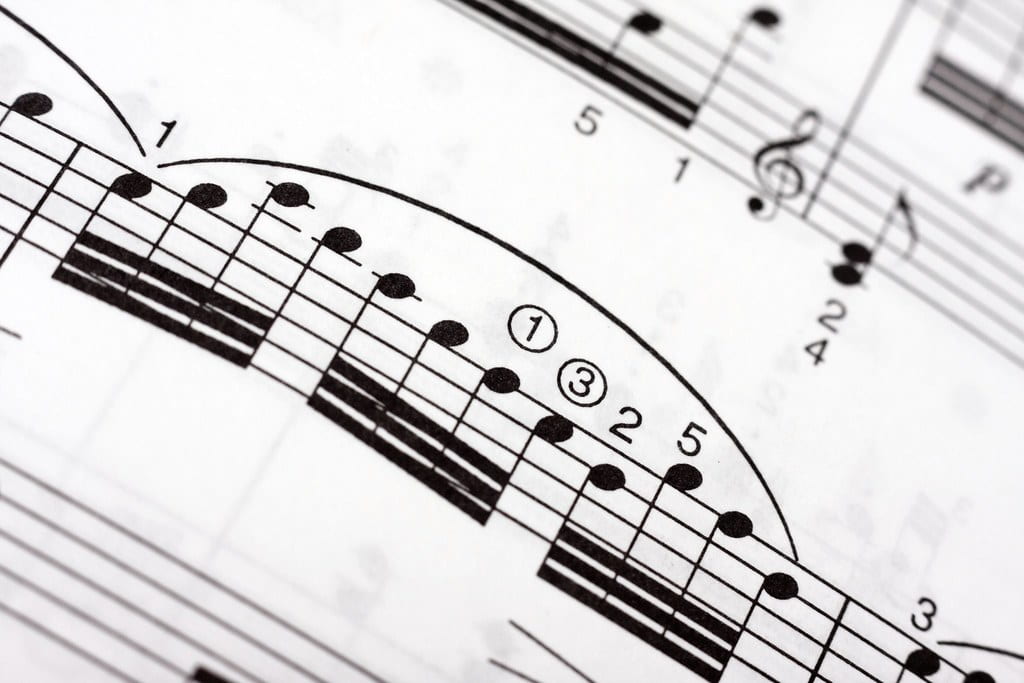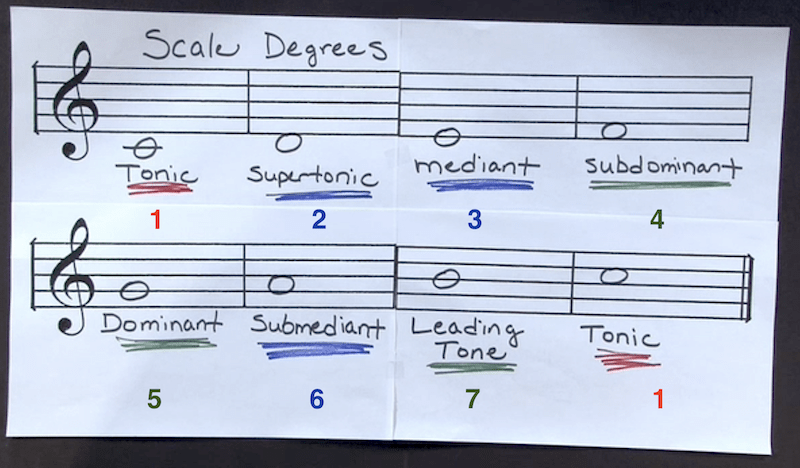
Summary
The Melody Project is all about how to make a melody and the way that different notes work together and how we can use them to create tension and release tension. We used hook theory to make our own melodies and listen to melodies from popular songs.
My First HookTheory Melody

I have prior musical knowledge but I just started working on writing my own songs so I am still learning how to create good melodies. For this melody, I was thinking about thirds and keeping the notes moving. I also wanted to end on the tonic so that any tension there was would release.
Melody Composition Terms and Definitions

- The terms and definitions below are from the Basic Concepts of Music Theory podcast by Jamie Henke at the University of Wisconsin-Madison
- Her Basic Concepts of Music Theory video on YouTube
- Theme: A long, flowing melodic idea.
- Motive: A short, rhythmic idea (Beethoven’s 5th).
- Period: 8-12 measures or a musical sentence.
- Phrase: Usually 4 measures.
- Antecedent (Question) Phrase: First 4 measures of a period.
- Consequent (Answer) Phrase: Second 4 measures of a period.
- Scale Degrees (C Major Scale)
- Tonic: C (1 , 8) – Stability and resolve.
- Supertonic, Mediant, Submediant: D, E, A (2 , 3 , 6) – Moderate tension, useful for transitions and carrying on an idea.
- Subdominant, Dominant, Leading Tone: F, G, B (4 , 5 , 7) – Causes the most tension, leads to the tonic.
- Steps: Any movement using half or whole steps.
- Leaps: Any movement using intervals larger than a whole step.
- Conjunct motion: Melody is built primarily out of steps.
- Disjunct motion: Melody is built primarily out of leaps.
- Repetition: Repeated material (i.e. motive) used to create a link between two phrases of the period.
- Contrast: Two phrases that contain contrasting material to create tension and interest.
- Variation: Halfway between contrast and repetition. The two phrases include some recognizable material and some varied material (i.e. taking ideas up an octave).
One of My Favorite Melodies
Let it Be by The Beatles

What I like about this melody is that it uses the third scale degree as a sort f anchor instead of the tonic. This song is in the key of C major so the third scale degree is E and the tonic is C. Manny of the jumps are also in thirds and there isn’t a whole lot of dissonance. Dissonance can be really good and scary for many melodies but I like how this one is claiming because of the lack of dissonance and tension.
My Second HookTheory Melody

In this melody, I like the first half of the second phrase with all of the 8th notes because the rest of the melody is mostly quarter notes so it gives it some variety. I knew that I wanted the second to last note to be the dominant or the leading tone to create some final tension right before we returned back to the tonic (c) for the last measure. I also figured out how to use multiple octaves in Hook Theory so I took advantage of that.
What I Learned & Problems I Solved
During this project, I learned about Supertonic, Mediant, and Submediant and how they can be used to help create and release tension. The rest of the theory stuff was a good review. I also learned how to navigate Hook Theory because I haven’t used it in depth before so that was a challenge for me.
Grammar and Spelling
Grammarly
Editor
April
Resources
- Assessment a Feedback
- General Music Composition Rubric (Google Doc)
- Period Melody Composition Rubric (PDF)
- Hook Theory Tools and Tutorials
- Music Theory
- Mr. Le Duc’s Key of C Major Notes and Chords Chart (PDF)
- How Music Works with Howard Goodall – Melody
- Melody defined at Wikipedia
- iTunesU – Basic Concepts of Music Theory by Jamie Henke at the University of Wisconsin-Madison
- Her Basic Concepts of Music Theory video on YouTube
- https://www.youtube.com/embed/rl-V2IsUprQ
- Michael New
- Art of Composing
- Free MIDI files midiworld.com/files/
- MIDI file of Beethoven’s Ode to Joy from his 9th symphony
- Coldplay Talk sample midi file
- MIDI and Music Notation Editors
- onlinesequencer.net – online
- flat.io – online
- noteflight.com – online
- MuseScore downloadable program
- GarageBand
- Melody Research, Analysis, and Recording Project Feedback Form (PDF)